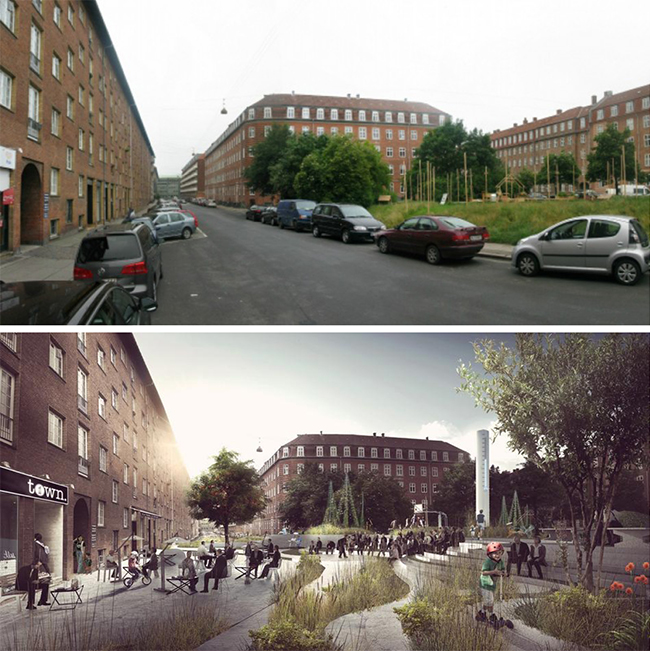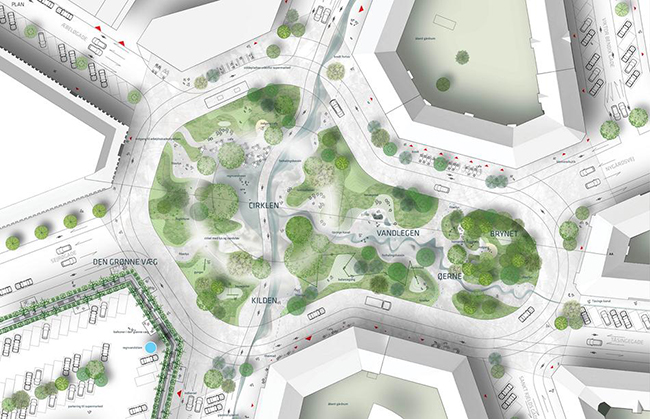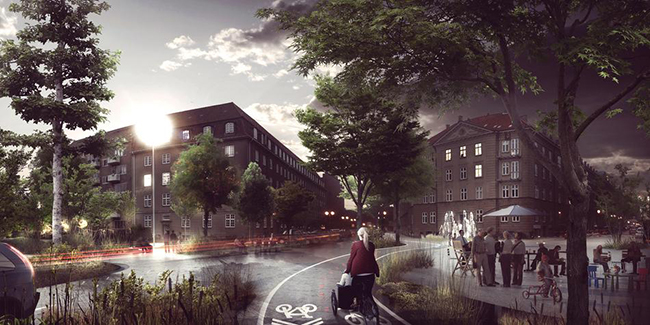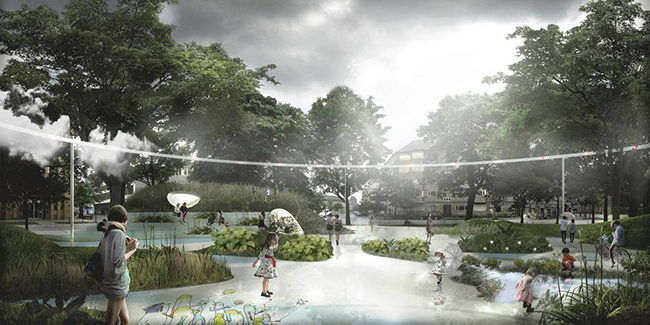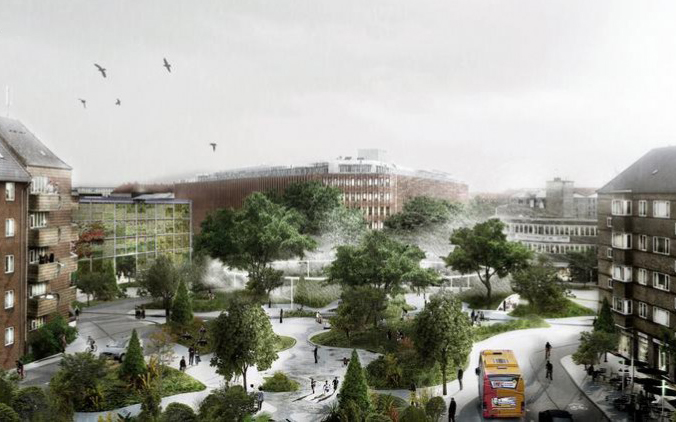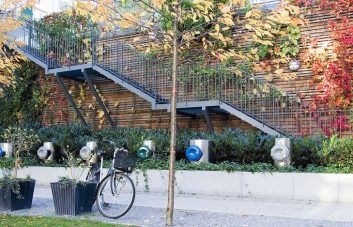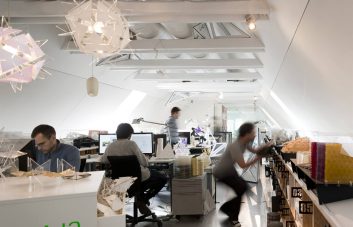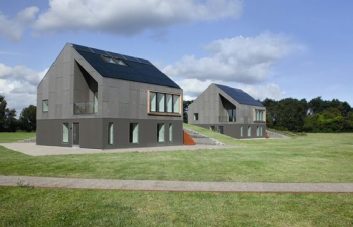Denmark – ‘Climate change is a huge opportunity to build greener cities. We should stop pushing nature away and stop pretending that we can push the weather away.’ —Flemming Rafn Thomsen, Architect, Tredje Natur
A neighbourhood in the port city of Copenhagen, St. Kjeld’s, was partially revitalized in 2014 as the world’s first climate-change-adapted neighborhood, in response to $1 billion of damage due to flooding a few years earlier. Many Scandinavian countries are located below sea level and are thus more susceptible to flooding. To combat this in St. Kjeld’s, local architecture firm Tredje Natur has developed a masterplan for the country’s first “climate resilient neighbourhood”. To address rainwater management and flooding issues due to an outdated sewer system, two options were reviewed: an improved sewer system, or green, natural means of water diversion. The green option was more economical and created opportunity for interesting public space. The challenge was to redirect or retain the water in the event of another flood using only landscape design – storm retention ponds in the form of hills and play areas were created, which retain the water until it is absorbed into the ground. Many of the asphalt roads have been replaced with permeable softscaping and walking paths, and other urban elements divert water to the harbour. By making these roads narrower and providing more permeable green space in the form of courtyards, public squares, and planted zones, large amounts of water can absorbed by this soft landscaping and drained away from the district, preventing flooding in many of the local residences. More green space translates to more public space here, including cafes, restaurants, markets, shops and playgrounds. Today, architecture firms such SLA and Henning Larsen Architects continue to develop the masterplan one block at a time.
We’re excited to visit this neighbourhood and see not only how public urban space can be revitalized, but see how community involvement can aid in this transformation. Residents here are encouraged to participate by cultivating public gardens, green roofs, and sidewalk planters. With everyone pitching in, it’s no wonder neighbourhoods like St. Kjeld’s will become great models of sustainability in the coming years.
